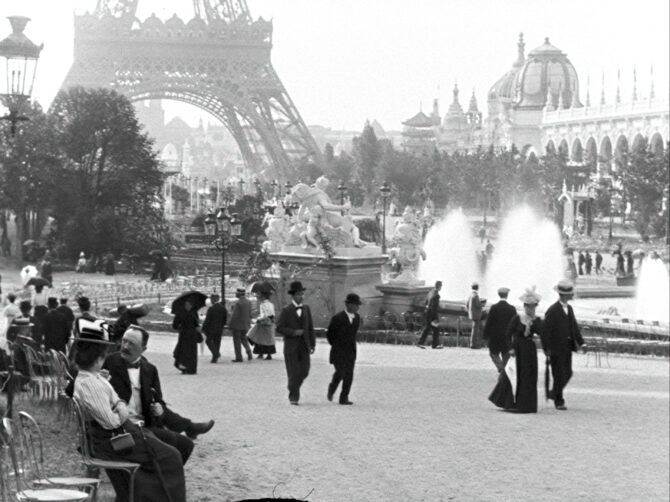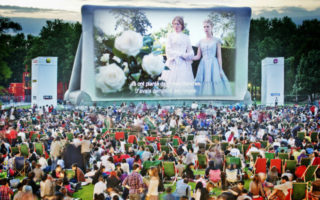Lumière! L’Aventure Continue: When Louis and Auguste Said Let There Be Light
How fitting that the Lumière brothers’ name means light. Louis and Auguste Lumière are revered in France for inventing cinema — light projected onto a white screen in a darkened room. Their invention brought living images of the world to people everywhere. It literally enlightened us, and life hasn’t been the same since. Lumière! (directed, though curated might be the better word, by Thierry Frémaux) is a film about the inventors of film, the making of individual films, and consists entirely of dozens of short film clips. The clips have been miraculously restored using modern means but they are restoration, not reconstruction. Aside from the visual quality, the clips are shown at the correct speed (original filming and projection speeds were different from modern ones, which exaggerated their old-timey aspect). Now the action flows in a perfectly natural way.
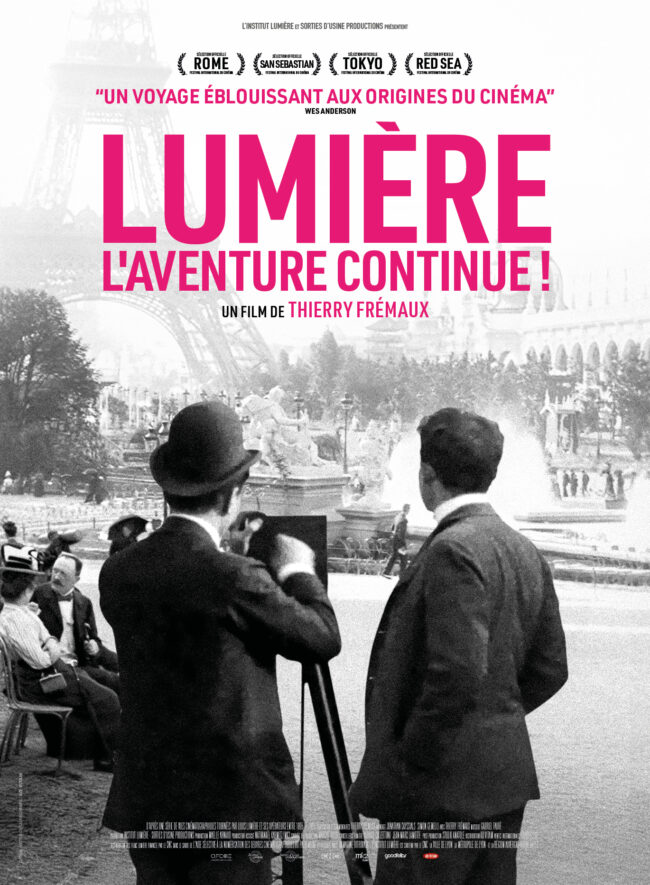
Lumière, L’Aventure Continue. Ad Vitam Distribution
We usually think of the Lumières’ undertakings in film as a family affair. Their father, who owned a photographic equipment factory was their supporter and encourager (one of their most famous early films shows workers streaming out of his factory). The brothers worked together to invent, develop and refine their filming and projecting techniques. They also worked together on the exhibiting side, in Paris, other parts of France, and in other countries. But it was Louis Lumière who shot the vast majority of the films that we see. The greatness of the short films doesn’t lie only in technology or technical craft. He had an unerring eye for subjects and settings, creating “natural compositions.” There was also a matter of selection. We learn in Lumière! that the famous factory sequence was one of several takes that were shot.
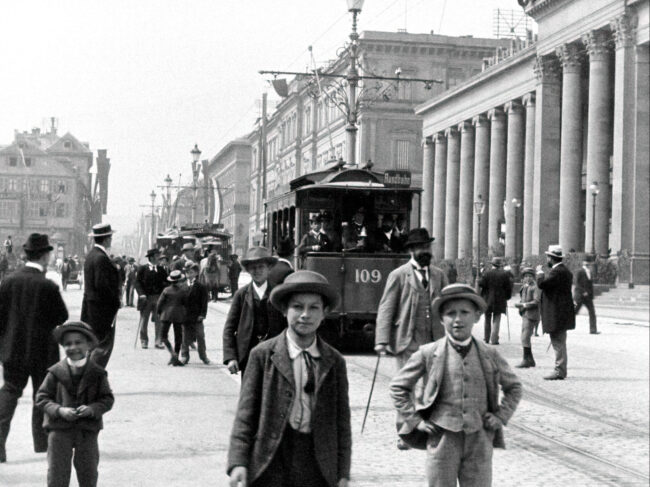
Lumière, l’aventure continue. Ad Vitam Distribution. © Institut Lumière.
While the film powerfully demonstrates Louis Lumière’s artistry, the viewer is also overwhelmed by the sheer realness of the reality depicted: all those non-actors, the locations, the natural light. Even these terms are too “filmy” to describe what we see. It goes beyond the art and science of film — it has to do with history, memory, past time itself. We all know that “nostalgia” selectively colors (or should we say colorizes?) the past in a sentimental way. We also know the tricks memory plays, to the degree of false or embedded memory. But the clips express the Otherness of the past, even when it’s not so utterly different. Ironically this can seem surreal. How strange to see, via the modern medium of film, Paris and New York streets teeming with horses and buggies. And stranger still to see the occasional electric trolley plowing through otherwise equine traffic.
One might easily surmise that the main characters of the documentary are the two Lumière brothers. As mentioned, Louis emerges as the artist of the family. We also see the brothers and other family members in some clips. However, we don’t learn much in the way of biographical details, whether professional or, especially, personal. The film is mostly “about” their body of work.
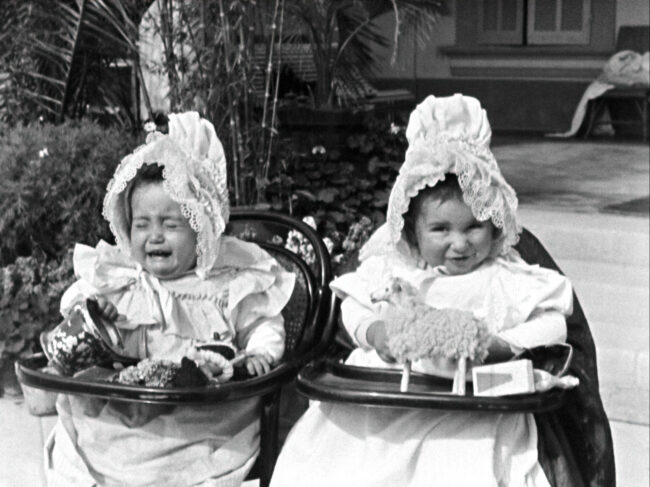
Lumière, l’aventure continue. Ad Vitam Distribution. © Institut Lumière.
On another level it’s Frémaux who is the film’s protagonist. He was behind the project, oversaw the collection of myriad short films, and narrates the film. His narrative personality is elegant, sometimes wry, sometimes lyrical. He happens to be the head of the Lumière Institute and Lumière Festival in Lyon, so he’s as authoritative as it gets. (He’s also been an important, sometimes controversial, official at the Cannes Film Festival) He’s a Lyon booster, and likes to point out that many of the films were shot in that city.
He’s also a partisan of the Lumière ethos of dealing with found reality. The early history of French movies tends to be divided between the Lumieres’ documentary approach and the proto-fantasy of Georges Méliès (who figures in Martin Scorcese’s historical fantasy Hugo). The narrator makes another distinction, between French cinema, from its beginnings to the New Wave, and Hollywood. (Perhaps that’s linked to current geo-political tensions?).
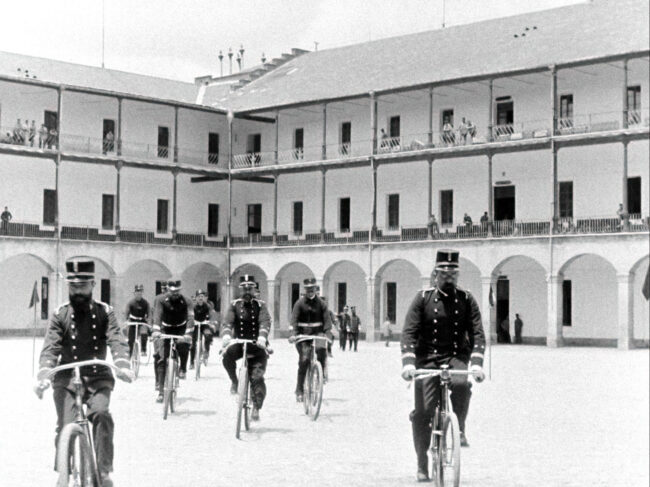
Lumière, l’aventure continue. Ad Vitam Distribution. © Institut Lumière.
It might be interesting to consider the film’s subtitle: “the adventure continues”. This can be taken on several levels (aside from the most literal: the film is a sequel to 2017’s Lumière: The Adventure Begins). It may refer to the scholarship and restoration being done on the Lumière brothers’ body of work. There may be more prints waiting to be discovered, as many were transported from country to country. There may be additional advances in digital restoration. Hopefully not colorization, though Peter Jackson did fascinating work reconstructing WWI footage, especially through sophisticated colorization.
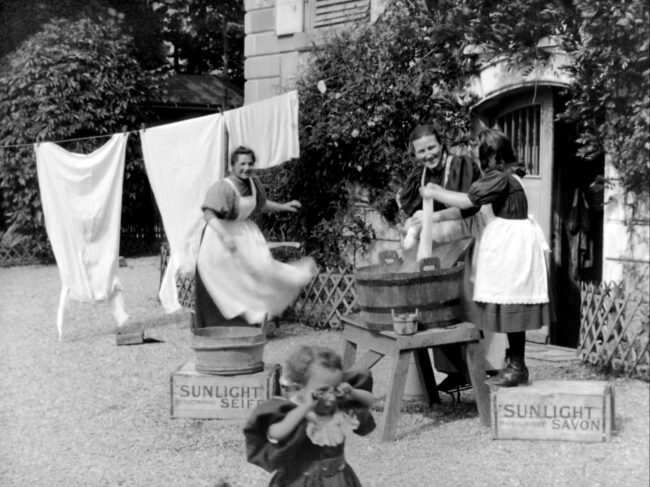
Lumière, l’aventure continue. Ad Vitam Distribution. © Institut Lumière.
If the subtitle refers to the Lumières’ pioneering of projected cinema, that’s debatable. It’s amusing to consider one nugget of information from the film: that it all began with their father being exposed to Thomas Edison’s kinetoscope, which showed film in a peepshow contraption (hence the claim that he’s the father of “motion pictures”, leaving aside that much of the work was done by employees). The defenders of the Lumières’ claim to be the true inventors lay stress on the idea of projection, a big screen, a collective experience. But today more people, perhaps most, watch films on devices or Netflix. This is nothing new. Cinema has existed for roughly 130 years. Commercial TV has been around since 1948, or 77 years (prototypes go back even further). That means the two mediums have co-existed for most of cinema’s history. Transformation doesn’t have to mean extinction: In my Connecticut hometown a movie palace built 99 years ago continues as a non-profit arts center.
The title may also refer to the documentary genre and related forms of “verité” filmmaking, including hybrids of fiction/reality, narrative/essay, film/CGI. French cinema has had great documentary filmmakers who followed the Lumières’ footsteps: Jean Rouch, Chris Marker, Marcel Ophuls. Even Jean-Luc Godard started his career with a documentary-fiction hybrid, Une Histoire d’Eau. (Let’s not forget advocate filmmaker Michael Moore and the Borgesian Errol Morris—America isn’t all Hollywood, Monsieur Frémaux!) There’s undoubtedly much more to be done. On that level, Lumière! L’Aventure Continue is a genuinely important and inspirational document.
Production: Sorties d’usine Productions/Institut Lumière
Distribution: Ad Vitam Distribution
Lead photo credit : Lumière, l'aventure continue. Ad Vitam Distribution. © Institut Lumière.
More in Lumière brothers, movies
